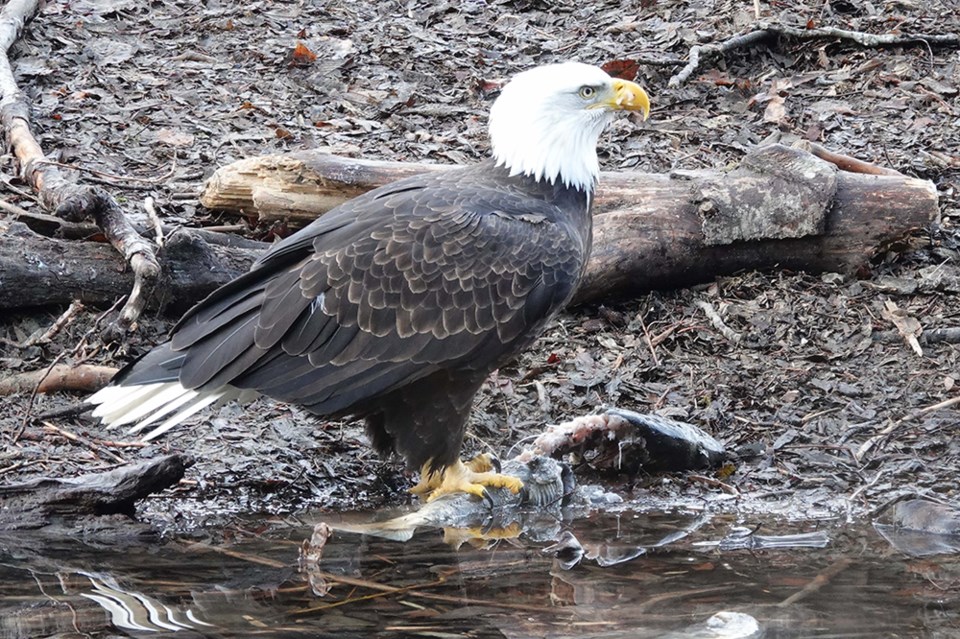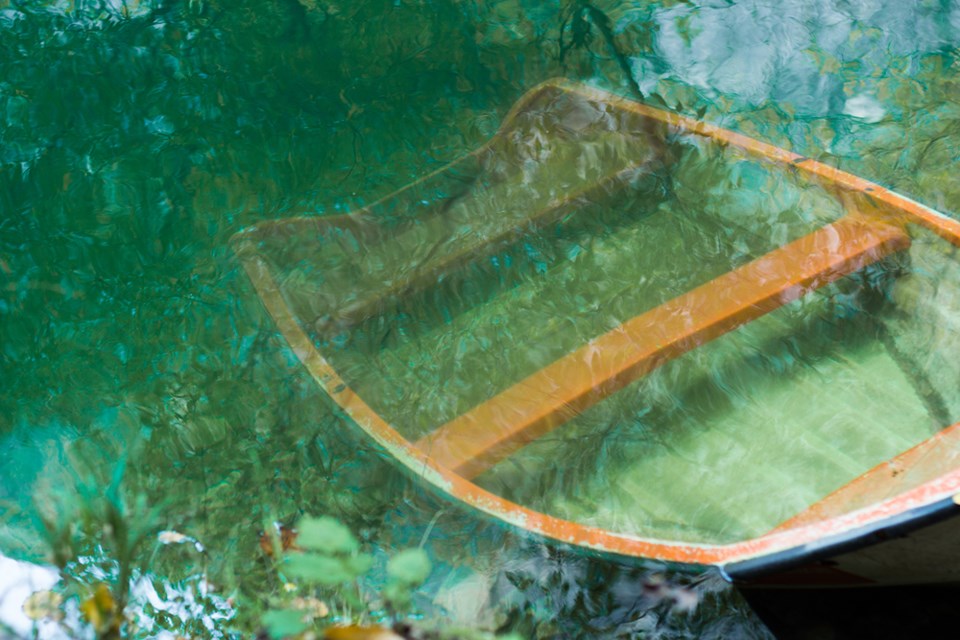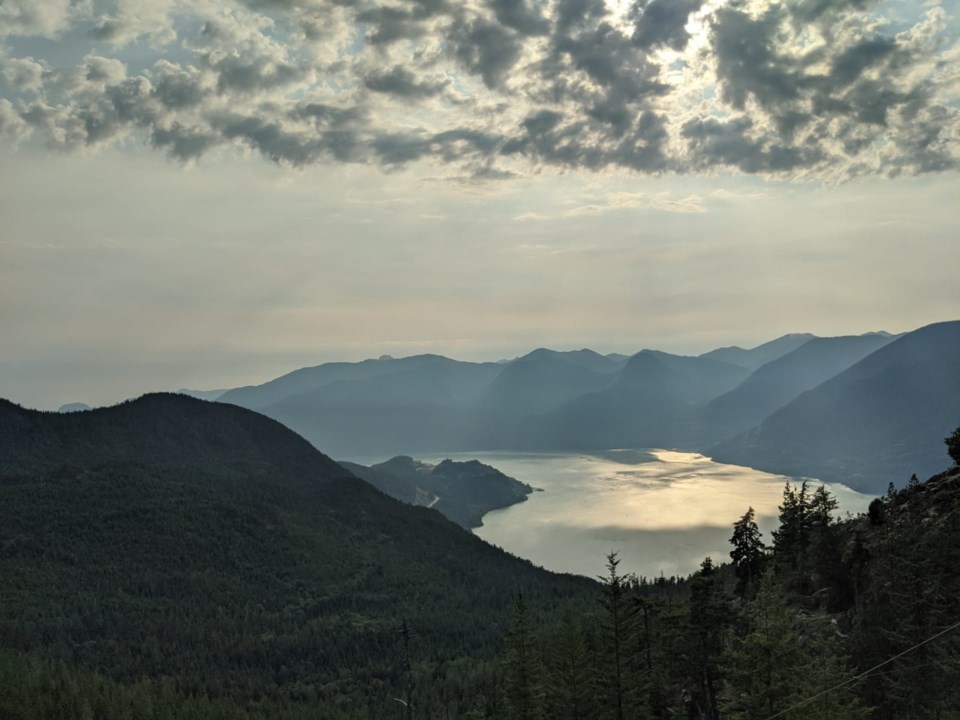While the waters may be calmer than they have been in the past, and the sun is shining on Howe Sound, storm clouds are approaching that we have to be aware of.
That is one key message of the newly released report from Oceanwatch: Átl'ḵa7tsem/Txwnéwu7ts/Howe Sound Edition 2020.
This is an update to the 2017-released report on the fjord's health.
Like the original, this comprehensive document looks at various aspects of the sound and supplies recommended actions for individuals, local governments, and organizations.
It also looks at the impact of climate change on the future of each issue discussed.
There is a health rating for each aspect of the sound: healthy, caution or critical.
The overall takeaway of the easily digestible, 388-paged report is that, as long-time Squamish residents know well, is that the sound has bounced back from its years of being polluted by the local industry. But what is also clear is that climate change is a threat to every aspect of Howe Sound.
"After the publication of the 2017 report, a community-based task force was formed to advance the recommended actions outlined in the original action plan. A key outcome from this task force was the creation of a strategic plan to guide local municipalities in advancing the recommended actions in a cohesive, collaborative manner," said Aroha Miller, manager of Oceanwatch, which is part of the Ocean Wise Conservation Association in a news release about the release of the report. "And three years later, we can see that this work is having a positive impact on the recovery of the marine environment. The communities throughout the sound are truly invested in the conservation, protection, and restoration of their local marine environment."
Mayor Karen Elliott said in the release that no one jurisdiction has responsibility for the sound which has made collaborative action challenging in the past.
"The Oceanwatch reports create a foundation on which we can all stand to chart out a shared path towards a more sustainable future."
The Chief has picked three areas of interest from the report.
Lack of hard data
The report depends a lot on the volunteer work by citizen science groups, which Miller says is fantastic and much appreciated, but there is a lack of hard scientific data on some aspects of the sound.
"That has come up as a key issue... impeding the health of the sound... There are so many places where it can be done," said Miller.
"Herring spawn, for example, has been monitored closely by citizen scientist John Buchanan... DFO — government organizations — are also limited by funding and so they concentrate their funding on key areas, and Howe Sound is not the key area for some of this work. They have much more than Howe Sound to look at, if you look at the whole country, it is a really small place."
Long-term monitoring by BC Hydro in the Cheakamus River that was part of the Water Use Plan ended in 2019, leaving another gap in data.

Eagles
In the 2020 report, eagles again garnered a caution rating, which they also did in 2017.
For the health of bald eagles, the report counts on citizen scientist birders, who found that the counts remained comparable in 2016 and 2019 to the previous decade.
In the three most recent years, fewer than 1,500 bald eagles were counted.
"They haven't improved or decreased in any way either," Miller told The Chief. "The numbers are variable — they go up and down — depending on the years, but by and large, they've remained... within the same range for the last 10 years."
Miller said that while we hear a lot about wild salmon stocks at risk, which one would think would impact the eagles that feed on the fish, the birds are still seemingly getting their fill.
"What we have reported on in this report is the hatchery perspective," she said, adding the data on wild salmon stocks is lacking. "There's definitely huge efforts to repopulate some of those local waterways, which feed into eagle numbers."
The Bowen Island Fish and Wildlife Club, for example, and Squamish's Tenderfoot Creek Hatchery run by Fisheries and Oceans Canada do "an awful lot of work re-populating various salmon species and they have been working on that since the early 1990s and the number of chum salmon they have been releasing per year have just been going up and up since 2012," Miller said.
In terms of how climate change will impact the health of eagles, the report says that a predicted increase in storms will result in more flooding events that could remove salmon carcasses from rivers. Streamflow and temperature changes could also impact salmon survival and reproduction.
"Consequently, eagles will search elsewhere for salmon or look for other food sources," reads the report.
This movement could result in lower bird counts if done at the traditional time in January.
The report recommends that individuals learn about the birds and safe practices for viewing them.
It also recommends best practice guidelines for protecting eagle nests during development that includes identification of eagle nests before development and the establishment of a vegetated no-disturbance buffer zone around the nest tree."

Abandoned boats
Abandoned, wrecked and problem vessels in Howe Sound have long been a thorn in the side of Squamish residents
Since 2016, however, efforts have been made to address the problem.
The report outlines the February 2019 passage of passage Bill C64 — the Wrecked, Abandoned, or Hazardous Vessels Act, which increases owner responsibility and liability for boats.
Not complying can lead to penalties that can range from $40,000 for individuals and $250,000 for companies.
The report acknowledges, however, that it isn't a fix-all. Figuring out who owns an abandoned boat is not always simple and which jurisdiction the issue falls under is not always clear cut.
"The passage of Bill C64 has been a very big win on this one, but it has also raised other issues," said Miller. "When is it Crown land — who should be taking responsibility for it? Is it a waste management issue? [The bill] has definitely helped to improve the situation, but it also requires more refinement."
Further, smaller communities simply don't have the funding for the correct discovery and disposal of some of these vessels if the owners can't be tracked down.
Since April of 2016, the Marine Reference Guide staff have been working to identify how many problem boats there are. So far, about 24 vessels and about 300 large pieces of debris have been counted in Howe Sound.
The Dead Boat Disposal Society, according to the report, works to remove the problem boats from B.C. waters, including the sound.
How climate change will impact the issue of wrecked, abandoned, and problem vessels,
is likely not something that springs to mind when thinking of the health of Squamish waterways, but it should be.
"One of the things that is already being seen throughout the sound with climate change is the increased intensity and frequency of storms," Miller said.
Through the 2018/2019 winter there were several pretty intense storms and a lot of boats got pulled off their moorings. A lot of infrastructure was damaged.
With climate change comes destabilized weather patterns, so Howe Sound is likely to see more storms which will send more wrecked/abandoned and problem boats topsy-turvy, leading to more marine pollution from them, Miller said.
For individuals, the new recommendation in the report is to photograph any abandoned boats spotted and note their names, registration, any details on who the owners may be as well as the date and any details available, and report the findings to [email protected]. Send tips, solutions, or success stories to [email protected].
For government, the recommendations are: keep vessel inventories; enforce local and municipal bylaws concerning liveaboards; develop educational material to increase awareness of environmental risks associated with problem vessels, develop policies to close the gaps in the jurisdiction of problem vessels.
The report is funded in part by the Sitka Foundation and North Growth Foundation.
Read the full report here:
Read the full OceanWatch report by Jennifer Thuncher on Scribd



